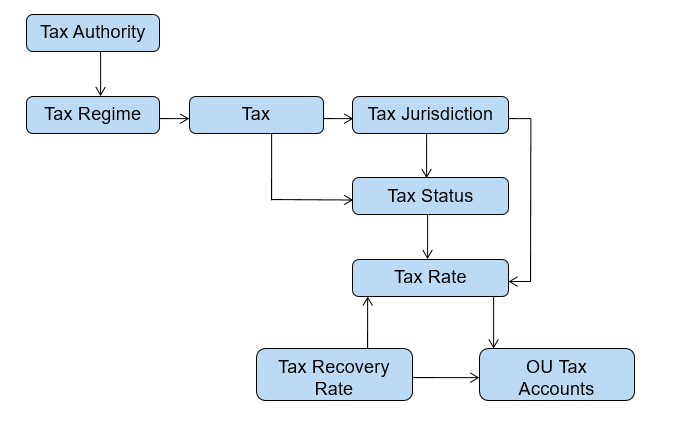EBS Tax Overview
Oracle E-Business Tax allows transaction tax requirements in all geographic locations where the company has business. Allows us to configure taxes to include rules, default values etc. for each tax requirement. At transaction time E-Business Tax uses tax configuration to determine which tax applies, based on which the tax amounts are calculated.
Oracle E-Business Tax provides the ability for transaction tax knowledge management and delivery using a global system architecture that is configurable and scalable for adding country-specific tax content.
Features of E-Business Tax
-
- Date affectivity on your tax configuration.
- Tax simulator which enables you to test your tax configuration.
- Classify your tax exceptions:
- Item
- Intended use
- Place of supply
- Look for commonalities:
- Define a classification rule to apply to many suppliers
- Group geography facts using TCA Geography model
Benefits of E-Business Tax
-
- Migration to Release 12 from Release 11i
- Minimize the need for detailed regional tax knowledge
- Simplified setup
- Minimize the risk associated with tax compliance
- Tax data modeling tool
- Automatic tax handling for:
- Sales and use tax
- Compound tax and surcharges
- Deferred tax
- Multiple tax registrations

Tax Authority: A government entity that regulates tax law, administers, or audits one or more taxes.
Tax Regime: The set of tax regulations that determine the treatment of one or more taxes administered by a tax authority
Tax : A distinct charge imposed through a fiscal or tax authority
Tax Jurisdiction: A geographical area where a tax is levied by a specific tax authority or where a specific tax rate applies
Tax Status: The taxable nature of a product or service in the context of a transaction for a tax type
Tax Rate: The rate specified for a tax status in effect for a period of time. You can express the tax rate as a percentage or as a value per unit quantity
Recovery Rate: The rate of input tax that is allowed to be recovered or offset against output tax. The recovery rate is applicable to VAT taxes.
Operating Unit Tax Accounts: The tax accounts that the system uses to post the tax amounts derived from your transactions. The tax accounts you define serve as default accounting information for taxes, tax rates, tax jurisdictions, and tax recovery rates.